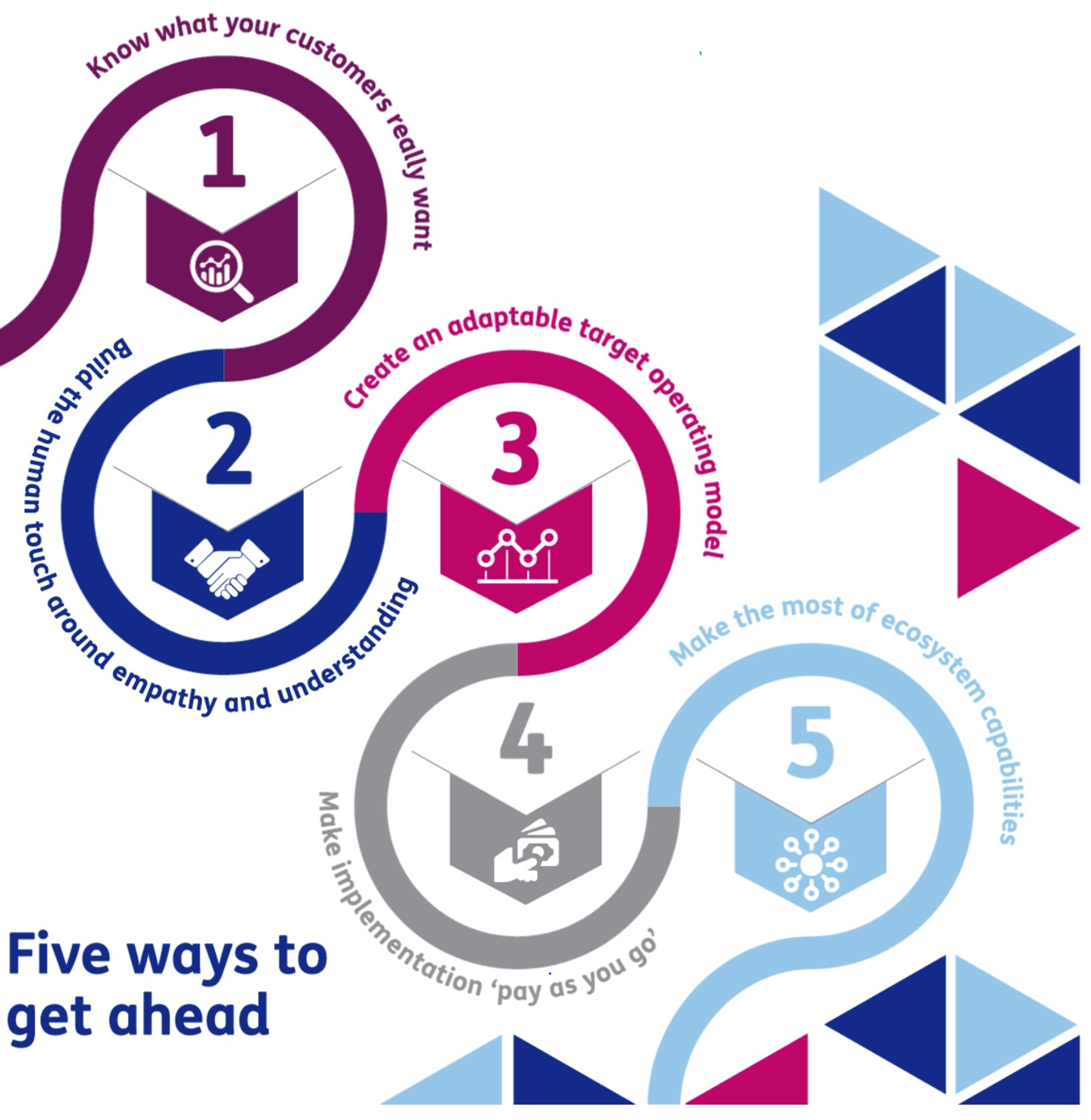
Combining technology and human touch to get closer to customers
9 min read
Reimagining engagement
Simply keeping up with digital native competitors is no longer enough to meet fast-changing customer expectations, let alone differentiate your business. Forward-looking financial institutions are combining the convenience of digital with the empathy of human interaction to enhance the way they engage with their customers, deliver better outcomes and provide a springboard for innovative new propositions.
In an earlier article, we looked at how a well-defined channel strategy offers the most effective and coherent way of realising the full potential of digital innovations.
The benefits are clear, including reduced cost to serve and better understand your customers and the ability to reach new markets without the need for a physical presence. Digital also allows you to anticipate customer demands and respond proactively – a customised ready-to-go mortgage as soon as someone starts viewing new homes, for example.
Having a single customer view that connects multiple channels also means you can create a more seamless and informed customer journey, moving from a narrow product focus to customer-centric solutions.
These customised solutions can fit around changing needs and cut across multiple product lines – shifting surplus deposits into investments or health, wealth and retirement, for example. Crucially, the most suitable components within these solutions can be sourced through open architecture ecosystems as well as in-house.
It’s clear, though, that those who place customer experience and transaction journeys at the heart of their payment design are those more likely to understand the opportunities ISO enables.
Overcoming the obstacles
Is the industry capitalising on these opportunities? Some financial institutions are gaining ground, but familiar legacy issues continue to hold many back. What we often see is that the customer-facing front end interactions are swift and slick, but the supporting infrastructure that sits behind it is still old, slow and compartmentalised.
This makes it hard to create either a single view of the customer or a seamless omnichannel journey. And while digital native challengers don’t have a legacy deadweight to hold them back, parity with them is now no more than table stakes rather than a differentiator.
The other big challenge is how to engage in the way customers want. This is far from clear-cut and often varies by segment and individual customer. While digital can provide a convenient and cost-effective option for routine transactions, the ever-increasing complexity of today’s financial demands often requires human input to advise customers and help devise the right solutions. This ability to bring in a human touch when needed is a chance for incumbent institutions to differentiate themselves from digital-only challengers.

Cementing loyalty and trust
Digital capabilities offer easier accessibility, valuable insights and faster response. But they can never replace the depth and trust that come from human engagement.
By adding the human touch to a digital approach, you’ll not only be able to develop more suitable solutions for complex needs, but also build relationships for lasting loyalty. Indeed, as more services become automated, the human touch could actually be a more important differentiator than before.
Want to discover how Baringa can help you? Explore our Customer and Digital services
Our Experts

Related Insights

Can payments really play a role in creating a differentiated and distinctive customer experience?
Industry experts share how payments have been a key driver in creating a differentiated and engaging customer experience in their businesses
Read more
Reimagine Financial Services Leadership Dialogues
We explore the topics of reinvigorating payments, refreshing customer journeys, rethinking the “Ecosystem” and how Financial Services are adapting to digital
Read more
Leadership Dialogues: Perspectives from a VC firm
In this video, we discuss how VC firms can support companies to solve real problems for financial services institutions.
Read more
Reimagine booking model controls
Many firms are dealing with the challenge of embedding their booking model control framework as regulatory scrutiny and expectations mount up.
Read moreIs digital and AI delivering what your business needs?
Digital and AI can solve your toughest challenges and elevate your business performance. But success isn’t always straightforward. Where can you unlock opportunity? And what does it take to set the foundation for lasting success?